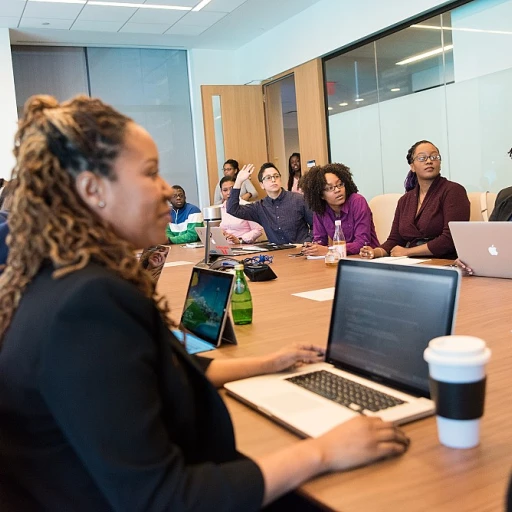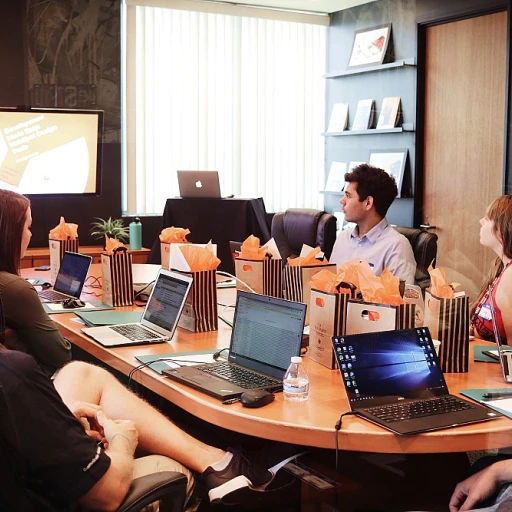
The Dreyfus Learning Model: A Brief Overview
Exploring the Dreyfus Learning Model
The Dreyfus Learning Model offers a structured approach to understanding skill acquisition and how individuals transition from being a novice to gaining expertise. The model, developed through extensive research and documented in various publications such as PubMed, breaks down the learning journey into clear, distinct stages. Each stage represents a different level of skill development and the acquisition of implicit and explicit knowledge.
This framework has been instrumental in clinical education and has shaped how skills are taught and evaluated across various domains, including human resources. By advancing through the Dreyfus stages—novice, advanced beginner, competent, proficient, and expert—individuals gain context-free problem-solving skills and decision-making abilities.
The Dreyfus Model is not merely theoretical; it provides practical insights into problem-solving and skill level enhancement. By understanding these stages, HR leaders can better identify where they stand in their journey and what they need to do to progress.
For those looking to take on roles such as a Chief Human Resources Officer, it's crucial to grasp the underpinning principles of this stage model. It provides a pathway to transition from being just a manager to becoming a strategic leader in HR. With each stage offering new learning experiences, the model not only aids in skill acquisition but also in enhancing strategic thinking.
In the broader context of HR leadership, understanding and applying the Dreyfus Model can redefine standard practices and promote development initiatives that resonate at each stage of an individual's career. To further explore how to inspire and engage as a Chief Human Resources Officer, visit this blog post for more insights.
Applying the Dreyfus Model to HR Leadership
Utilizing the Dreyfus Model in HR Leadership Development
The dreyfus model of skill acquisition provides a structured framework for understanding the progression from novice to expert. In HR leadership, applying this model involves recognizing the unique stages of development that leaders undergo. Each stage offers different challenges and requires specific support to enhance skill acquisition effectively.
An HR leader following the Dreyfus model may initially be at a novice level. At this stage, they rely heavily on rules and guidelines, given their limited prior experience. This context-free understanding is typical as they are just beginning to explore the complexities of HR leadership. This stage emphasizes the importance of explicit knowledge and structured learning opportunities.
As these leaders advance to the ‘advanced beginner’ stage, they start recognizing patterns and contextual clues that weren't apparent before. Problem-solving skills begin to emerge as they gain more direct experience, albeit still requiring support from more experienced mentors or peers.
With further development, these leaders transition to a competent skill level. Here, they start developing implicit knowledge and can work with a degree of independence, performing more clinical problem-solving tasks. Clinical skills and decision-making processes become more nuanced and integrated with their broader understanding of HR operations.
Moving into the proficient and expert stages, HR leaders possess the ability for intuitive and holistic decision-making. Problem-solving becomes more fluid, driven by an inherent understanding of complex dynamics and challenges. Their deep-seated expertise allows them to anticipate issues before they arise and create strategic solutions rather than reactive measures.
Adopting the Dreyfus model in HR leadership training programs enhances skill development by creating targeted learning paths. Understanding these stages and their associated challenges allows organizations to better support their leaders, ensuring they possess the capabilities to navigate and lead within dynamic environments.
From Novice to Expert: The Journey of a CHRO
Progressing Through the Stages of HR Leadership
Understanding the journey from a novice to an expert in HR leadership, particularly for a Chief Human Resources Officer (CHRO), requires exploring the stages of the Dreyfus Model. This model of skill acquisition has practical applications in the development of HR leadership skills. It offers a framework that illustrates how one can advance in their professional capabilities, moving from a basic level of understanding to high-level expertise. Starting at the novice stage, an individual typically relies on explicit knowledge to perform tasks, often adhering to strict rules and guidelines without much room for personal judgment. The learning process is context-free, focusing on understanding the foundational principles that guide HR practices. As they gain experience, they evolve into an advanced beginner, where they begin to recognize patterns and integrate some level of judgment based on situational contexts. Transitioning to competency, the learner starts taking responsibility for decision-making. This stage emphasizes problem-solving skills, where the CHRO begins to systematically approach challenges by setting long-term goals and consciously choosing strategies to achieve them. Decision-making becomes more deliberate, and clinical problem-solving skills become evident as the CHRO learns to balance rules with the nuances of individual situations. Moving towards proficiency, the CHRO leverages both implicit knowledge and facts. While the learner in this stage may still depend on analytical thinking, they can also recognize when intuition and experience better suit the problem at hand. This combination of skills enables a more fluid and adaptive approach to HR leadership. Reaching the expert level, the CHRO exhibits an intuitive grasp of HR complexities, seamlessly integrating knowledge and experience to address challenges. At this point, decision-making often becomes a largely unconscious process as they swiftly segregate key issues and act upon them without needing a rules-based approach. The expert CHRO not only navigates complex scenarios but also intuitively anticipates challenges and opportunities. In aligning one's career path to the CHRO role, understanding how these stages of the Dreyfus Model of skill development apply is crucial. Each stage builds upon the previous one, enhancing both clinical skills and strategic decision-making capabilities. For those interested in further exploring how these stages impact change management and the strategic role of a CHRO, consider reading more on the role of a change agent in HR leadership.Challenges in HR Leadership Development
Obstacle Navigation in the Pathway to Mastery
In the landscape of HR leadership development, transitioning from one stage of expertise to another presents an array of challenges. Recognizing these can be key to effectively managing the learning journey in the role of a CHRO. Understanding the Dreyfus Model's stages of skill acquisition—novice, advanced beginner, competent, proficient, and expert—provides invaluable insights. One of the primary challenges lies in the shift from explicit to implicit knowledge. As HR leaders progress from novice to expert, reliance on rules and context-free frameworks becomes insufficient. Decision-making evolves from following structured guidelines to using clinical skills and problem-solving abilities that draw on accrued experience. This transition requires fostering a culture where implicit knowledge is shared and valued. Moving through the stages, HR leaders must deal with the complexity of developing their skills without clear, rigid frameworks. Often, this involves entering unfamiliar terrains where prior experiences are pieced together to solve complex problems. Skill development is also about embracing uncertainty, which may contrast with the novice's experience of the clear-cut procedural knowledge they began with. Moreover, achieving mastery in HR leadership includes developing strategic decision-making skills, a process intricately linked to understanding and applying the Dreyfus Model stages. Leaders must cultivate a proactive learning environment supported by med educ principles, ensuring continuous skill enhancement through both structured and unstructured learning opportunities. Finally, navigating through these stages often includes overcoming biases associated with one’s existing level of expertise. Recognizing that every expert was once a novice encourages humility and openness to new learning experiences. The challenge remains to integrate and implement advanced problem-solving skills while encouraging others in the organization to also progress along the Dreyfus stages toward expert skill level.Enhancing Strategic Decision-Making Skills
Strengthening Decision-Making Through the Dreyfus Lens
Enhancing strategic decision-making skills in HR leadership is an essential component of bridging the gap between novice and expert stages as outlined in the dreyfus model. This stage-based model offers a framework that CHROs can employ to transition through different levels of expertise in decision making. Utilizing the model, HR leaders can systematically develop their decision-making abilities by recognizing where their current skills lie within the framework. As these individuals progress, they acquire deeper implicit and explicit knowledge, contributing to an elevated level of problem-solving skills. It is imperative for CHROs to harness both clinical and context-free skills, maximizing their ability to tackle complex, real-world scenarios with precision. The process of skill acquisition, as explained by the dreyfus stage model, involves the gradual accumulation of experience and clinical skills which, over time, lead to mastery. For HR leaders, this means continuously honing decision-making by applying rules at the novice level and advancing to intuitive, expertise-driven problem solving as their competence grows. Implementing a structured approach also facilitates the embedding of these advanced problem-solving techniques, often necessary for clinical contexts and high-stakes decision-making environments. Leaders must therefore engage in consistent skill development and leverage learned experiences to refine their strategic choices. Recognizing and nurturing each stage of skill development empowers HR leaders to transition from mere advanced beginners to experts in strategic decision-making. As they ascend the expertise ladder, these leaders are better positioned to drive strategic initiatives that align with organizational goals, demonstrating the value of the dreyfus model in HR leadership training programs.Implementing the Dreyfus Model in HR Training Programs
Integrating the Dreyfus Model in HR Training Initiatives
Incorporating the Dreyfus Model into HR training programs can significantly enhance the development of both clinical and strategic decision-making skills. The model skill framework provides a structured approach for skill acquisition, allowing HR leadership to progress methodically from a novice expert. To begin, HR training programs can be designed to engage individuals across various skill levels:- Novice: At the foundational stage, programs should provide explicit knowledge and context-free learning experiences to introduce HR professionals to basic concepts and rules. This stage is crucial for acquiring explicit knowledge.
- Advanced Beginner: Focused on expanding the contextual understanding of employees, training should offer scenarios that encourage the application of learned principles in realistic, albeit simplified, situations.
- Competence: At this stage, employees gain experience and begin developing problem-solving skills with less reliance on step-by-step instructions.
- Proficient: Training should incorporate complex activities that promote implicit knowledge, enhancing decision-making capabilities crucial for HR leadership.
- Expert: At this stage, hands-on, real-world challenges empower employees to intuitively address HR issues, leveraging deep experience and implicit knowledge.












